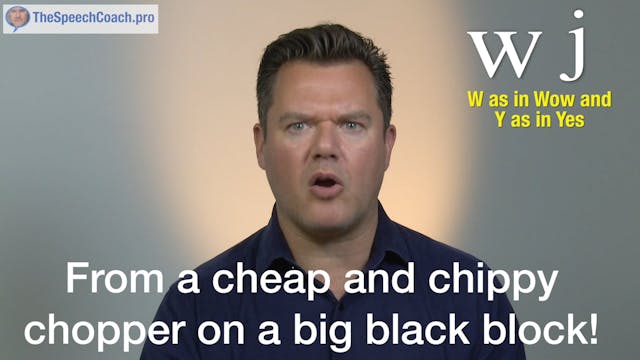037 S as in Speech and Z as in Zoo
Voice & Speech Training - LIFETIME ACCESS
•
7m 53s
Our final pair of voiced and unvoiced sounds are “S” and “Z”.
These sounds are alveolar fricatives so the breath is channeled straight forward into the alveolar ridge: “SSS” “ZZZ”
The “S” sound can become slushy and move towards a “SH” sound. This happens particularly when the S is followed by a T so “street” can become “shtreet” and “strong” can become “shtrong”. This bad habit is very easy to fall into so please be on your guard and please: stay strong!
A very common speech fault is sibilance. Sibilance is a term used by speech teachers to describe speech which is too full of the unvoiced “S” sound because it is missing too much of the voiced “Z” sound. Simply put, you are sibilant if you have too much “SSS” in your speech and not enough “ZZZ”! Watch out for the voiced “S” which is pronounced as a “Z” as in, well, as in the word “AS”! The rule is that if an “S” follows a voiced sound then it becomes voiced.
Some examples:
Examples
Mums
House (this is the verb form)
Cars
Homes
Some exceptions:
Use (the noun form)
House (the noun form)
Nurse (all forms!)
Nursing
Also, do not fall into the habit of stretching an unvoiced “S” at the end of a word like “yes” so that it becomes “yesss”. To be safe, you should make a final “S” last for no longer than a final “T”.
Compare “yet” and “yes”
The letter X can also make a voiced “Z” sound as in
Xylophone
Xenophobia
Xavier and
Xanthe
More commonly though, the letter X makes a “K” plus a “S” sound, so the word “six” would be written phonetically as s, the short vowel I, the letter k and the letter s. S I K S - six. Because of these hidden multiple sounds, the letter X can create some real tongue twisters for speakers and so I will be including it in the drills for this section - but, as ever, a dictionary, or particularly a pronunciation dictionary, should clear up any confusions.
Up Next in Voice & Speech Training - LIFETIME ACCESS
-
038 W as in Wow and Y as in Yes
This pair of sounds are approximant sounds. “W” and “Y”. These consonant sounds are almost vowels.
“W” is made with a tiny “oo” sound and then moves to the vowel which follows it.
“Y” is made with a tiny “I” sound and then moves to the sound that follows it. Phonetically it is written as a ...
